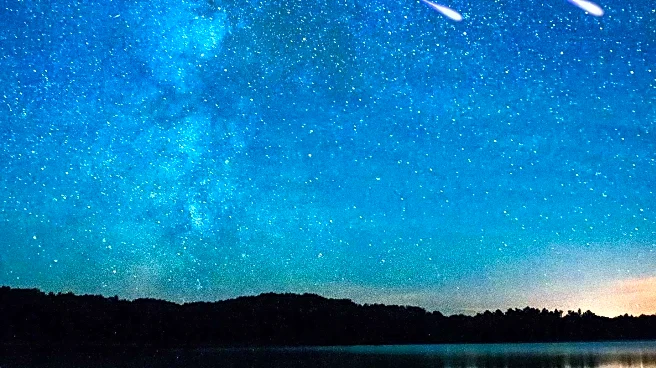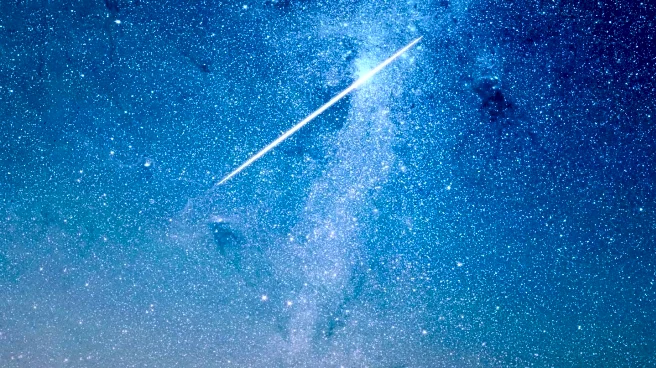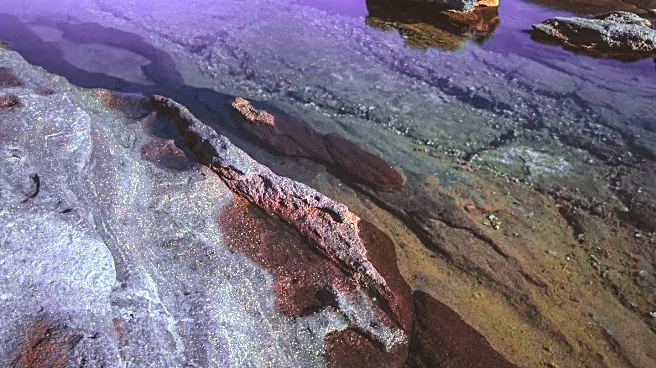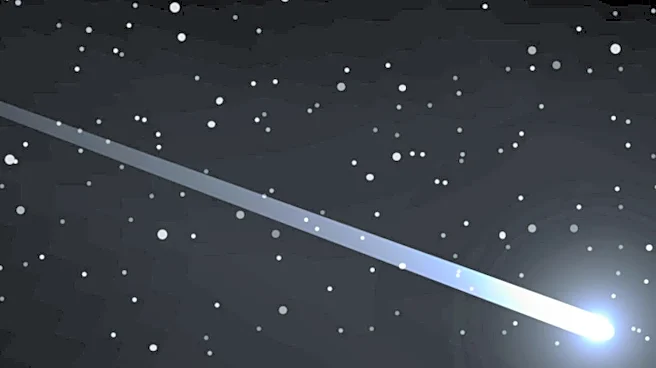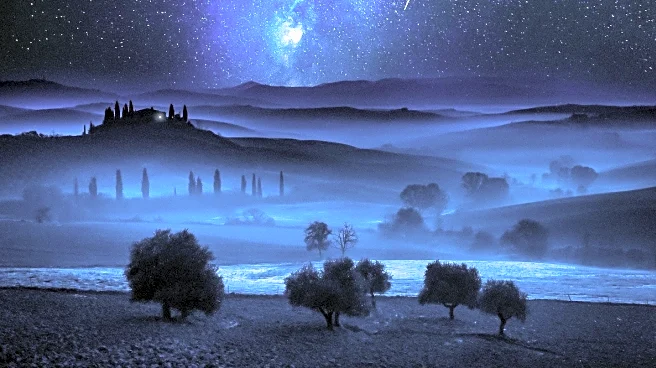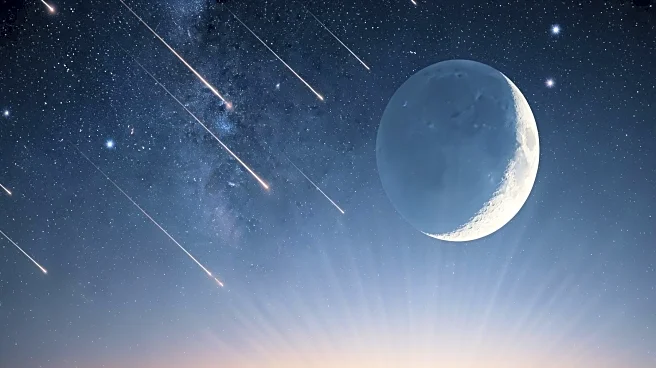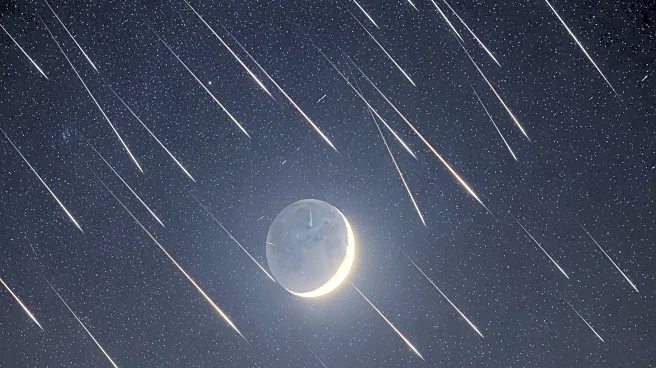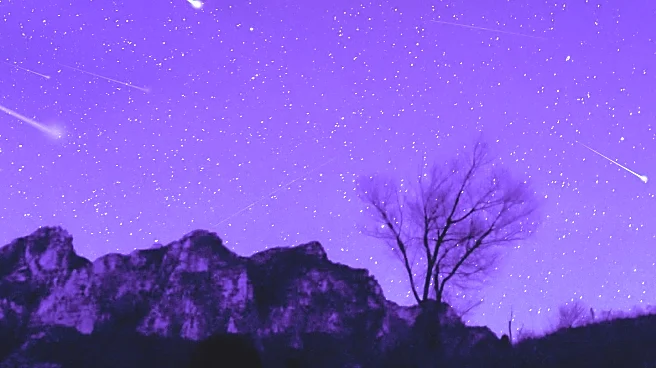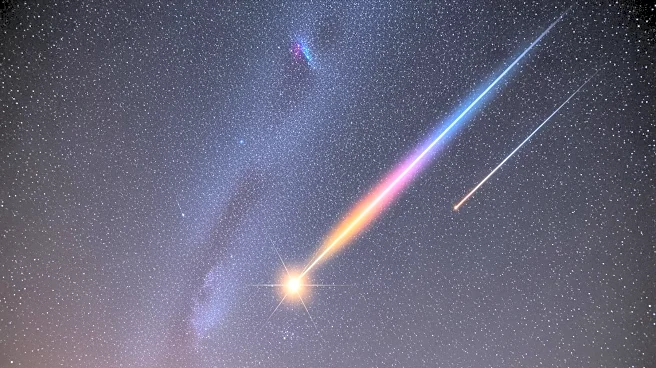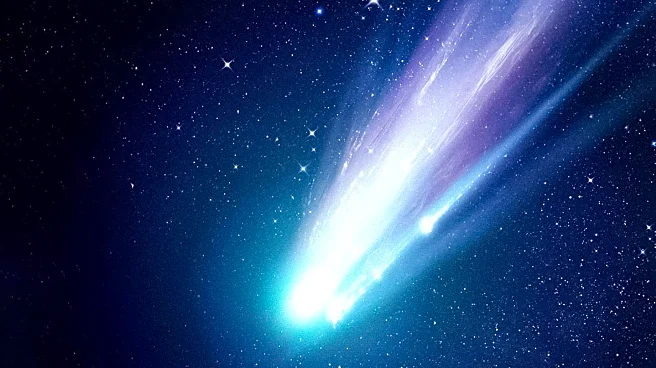What's Happening?
The Orionid meteor shower, an annual celestial event, is set to peak between October 21 and 23, 2025. According to NASA, the Orionids are known for their speed and brightness, with meteors streaking across
the sky at speeds up to 148,000 mph. The shower is a result of debris from Halley's Comet, which last approached Earth in 1986 and is expected to return in 2061. The American Meteor Society notes that the Orionids can produce 15 to 20 meteors per hour under optimal conditions. This year, the new moon on October 21 ensures dark skies, providing excellent viewing conditions for observers.
Why It's Important?
The Orionid meteor shower offers a unique opportunity for both amateur and professional astronomers to observe one of the most brilliant meteor displays of the year. The event is significant for educational and scientific communities, as it provides a chance to study meteoroid composition and behavior. For the general public, it is a chance to engage with astronomy and appreciate the natural wonders of the night sky. The absence of moonlight this year enhances visibility, making it an ideal time for stargazing enthusiasts to witness this spectacular event.
What's Next?
Observers are encouraged to find a dark location away from city lights to maximize their viewing experience. The best time to watch is after midnight until dawn, with the meteors appearing to radiate from the constellation Orion. As the event progresses, it is expected that interest from the public and media will increase, potentially leading to more educational outreach and public engagement in astronomy.
